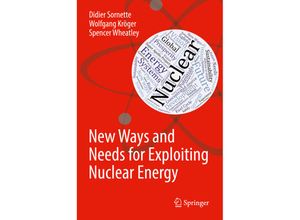The history of mankind is a story of ascent to unprecedented levels of comfort productivity
and consumption enabled by the increased mastery of the basic reserves and flows of energy.
This miraculous trajectory is confronted by the consensus that anthropogenic emissions are
harmful and must decrease requiring de-carbonization of the energy system. The mature field of
indicator-based sustainability assessment provides a rigorous systematic framework to balance
the pros and cons of the various existing energy technologies using lifecycle assessments and
weighting criteria covering the environment economy and society as the three pillars of
sustainability. In such a framework nuclear power is ranked favorably but since emphasis is
often placed on radioactive wastes and risk aversion renewables are usually ranked top.
However quantifying the severity of the consequences of nuclear accidents on a rough integral
cost basis and balancing severity with low-core damage accident probabilities indicates that
the average external cost of such accidents is similar to that of modern renewables and far
less than carbon-based energy. This book formulates the overall goal and associated
unprecedented demanding criteria of taming nuclear risks by excluding mechanisms that lead to
serious accidents and avoiding extremely long stewardship times as far as possible by design.
It reviews the key design features of nuclear power generation paving the way for the
exploration of radically new combinations of technologies to come up with revolutionary or even
exotic system designs. The book also provides scores for the selected designs and discusses the
high potential for far-reaching improvements with small modular lines of the best versions as
being most attractive. Given the ambition and challenges the authors call for an urgent
increase in funding of at least two orders of magnitude for a broad international civilian
super-Apollo program on nuclear energy systems. Experience indicates that such investments in
fundamental technologies enable otherwise unattainable revolutionary innovations with massive
beneficial spillovers to the private sector and the public for the next generations.

